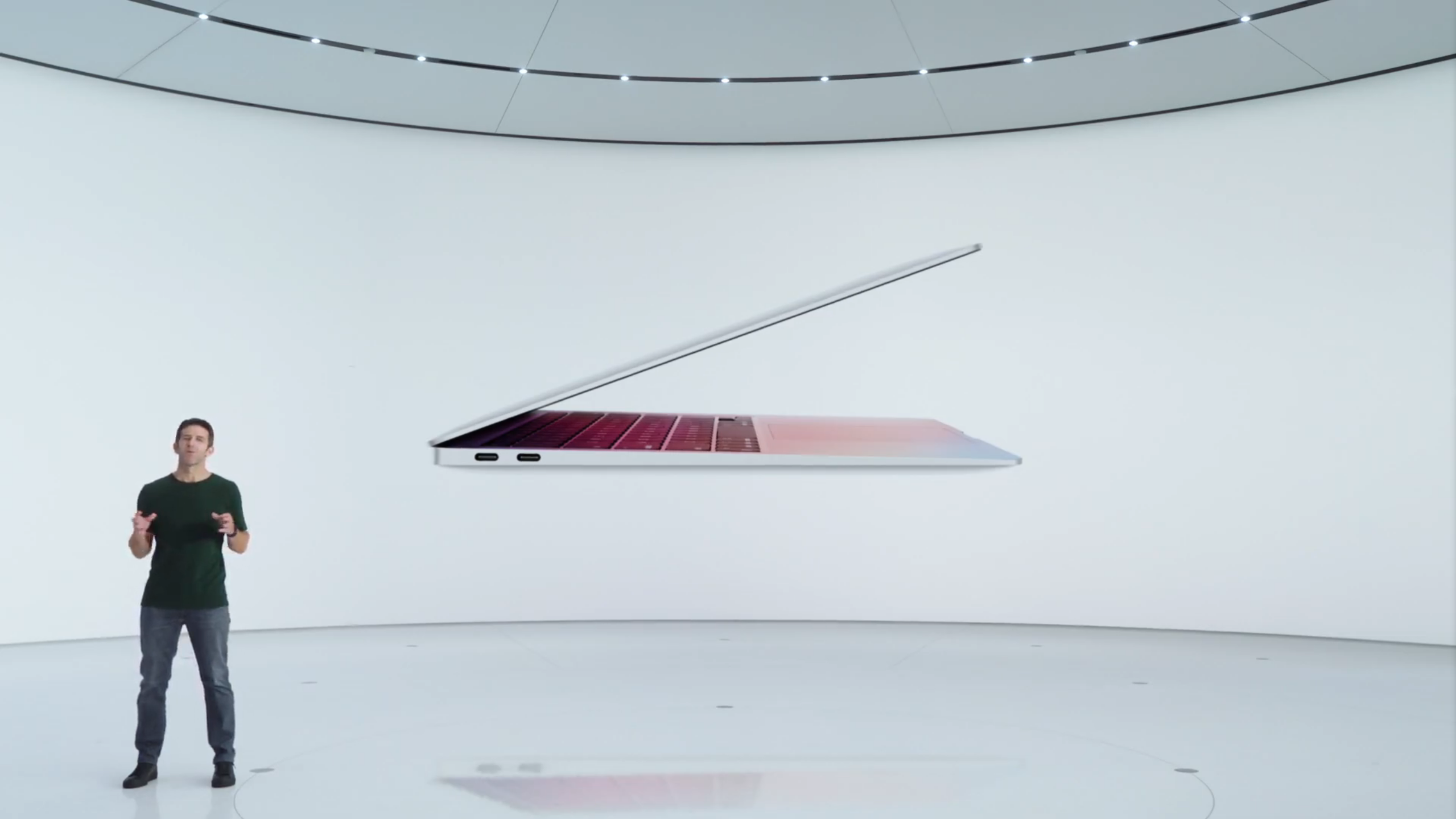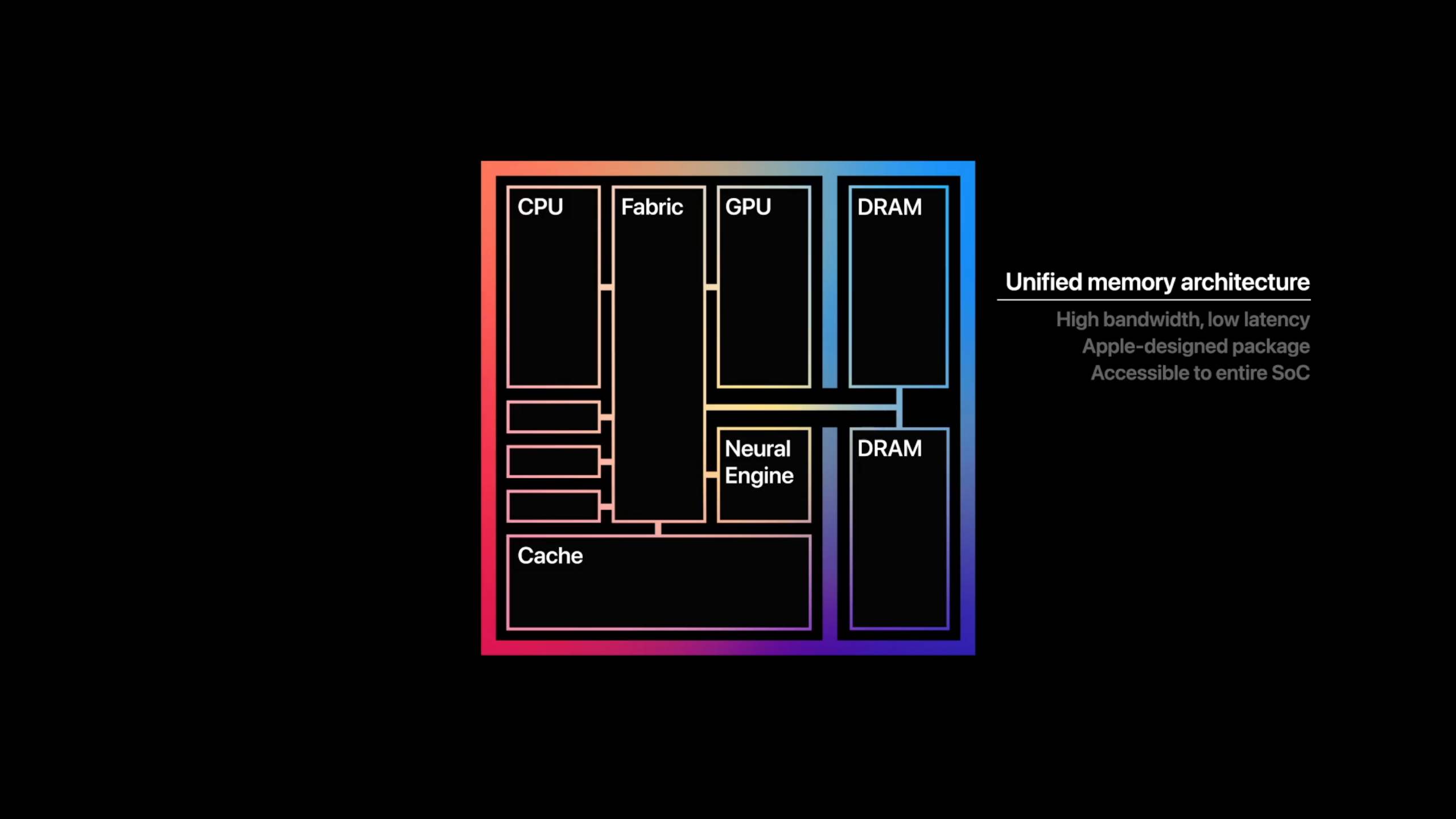MacBook Air with M1 chip unveiled: Apple enters a new era
Apple's first ARM-based laptop runs on an M1 chip

Apple unveiled today a new MacBook Air running on custom ARM-based silicon, marking a new era of computing for the Cupertino giant.
Released alongside the new MacBook Pro, the MacBook Air will be available starting on November 17 at $999 (or $899 for education users). You can buy the MacBook Air today. The laptop will run on macOS Big Sur, which arrives on November 12.
- MacBook with Apple Silicon: Release date, rumors, specs, and what we want
- Apple event: What to expect at the November 10 'One More Thing' showcase
- Intel vs. ARM Macs: What's the difference and which should you buy?
MacBook Air specs
Price: $999 ($899 for education)
CPU: Apple M1
RAM: 8GB, 16GB
Storage: 256GB, 512GB, 1TB, 2TB
Display: 13.3-inch, 2560 x 1600-pixels (400 nits)
Battery: 15 hours (web surfing); 18 hours (video playback)
Size: 12 x 8.4 x 0.6 inches
Weight: 2.8 pounds
The new MacBook Air runs on an M1 chip, the first SoC for Mac. The M1 SoC is a 5-nanometer chip with 16 billion transistors. Apple says the new M1 chip in the MacBook Air delivers three times faster performance and five times the graphics performance of the previous MacBook Air.
The M1 isn't the only upgrade the MacBook Air gets. The SSDs are 2x faster thanks to the storage capabilities in the M1. And because the M1 is so efficient, the laptop doesn't have a fan and should, therefore, be completely silent.
Battery life is rated at 15 hours of wireless browsing and 18 hours of video playback, or 6 hours longer than the previous laptop. We'll need to run our own tests to determine real-world runtimes, but these are very promising (especially because Apple is usually accurate with its battery life ratings).

The New MacBook Air has a 13.3-inch display that adds P3 wide coverage for more vivid colors. The design of the laptop hasn't changed much but there are a few noteworthy additions. Touch ID arrives on the Air on the top-right of the deck and the webcam is supposedly improved with ambient noise reduction capabilities.
For ports, you're still stuck with only two Thunderbolt 3 inputs (on the left side) and a headphone jack.
Sign up to receive The Snapshot, a free special dispatch from Laptop Mag, in your inbox.
Digging deeper into the specs, the MacBook Air supports up to 16GB of RAM and up to a 2TB SSD.
MacBook Air debuts M1 SoC

Apple's M1 chip is the highlight of the new MacBook Air. The SoC includes two types of cores: high performance and high efficiency. Specifically, the M1 has four high-performance cores for demanding tasks and four high-efficiency cores that use one-tenth of the power for lightweight tasks and long battery life. According to Apple, the efficiency cores alone deliver the same performance as the current MacBook Air but with much higher efficiency.

Apple says the M1 has the highest CPU-per-watt, meaning you can get fast speeds while using minimal power. When it comes to graphics, M1 has integrated graphics that Apple suggests can perform as well as discrete graphics. It has eight GPU cores that Apple says can deliver twice the performance at one-third the power of current processors (Apple didn't specify what it's comparing its chips against).
The M1 supports Thunderbolt inputs with USB 4 and includes Apple's Secure Enclave.
What does this all mean for users? Final Cut Pro can render a timeline up to six times faster while Logic Pro can play three times as many instruments and plugins. When it comes to third-party apps, Adobe is bringing Lightroom over to M1 next month and Photoshop will arrive early next year.
Apps that aren't ported to ARM will use Rosetta 2, a translator that automatically moves Intel apps over to ARM. Apple says some apps actually run faster on Rosetta than they did natively on Intel chips.
MacBook Air app compatibility
Apple says the transition away from Intel to custom chips will take two years so developers can move their apps to a new architecture. The company wouldn't be taking such a big risk if there weren't a reward waiting on the other side.
The most immediate benefit is native support for iOS apps on Macs. Apple users can now play their favorite games or use their favorite utility apps on their MacBook, just as they would on an iPhone or iPad.
However, there is some fine print as recent reports claim many major app publishers — including Facebook and Google — are withdrawing popular apps from the Mac App Store. Apple hasn't confirmed as much so we'll need to wait and see what is and isn't available in the app store.
Then there's the question of what apps will and won't run, and how well they perform on a new architecture. Because of this, it will be more important than ever to read reviews from users and critics alike when these products are released.
With the new MacBook Air and MacBook Pro releasing next month, we expect to publish our own review in the coming days or weeks.
Phillip Tracy is the assistant managing editor at Laptop Mag where he reviews laptops, phones and other gadgets while covering the latest industry news. After graduating with a journalism degree from the University of Texas at Austin, Phillip became a tech reporter at the Daily Dot. There, he wrote reviews for a range of gadgets and covered everything from social media trends to cybersecurity. Prior to that, he wrote for RCR Wireless News covering 5G and IoT. When he's not tinkering with devices, you can find Phillip playing video games, reading, traveling or watching soccer.

